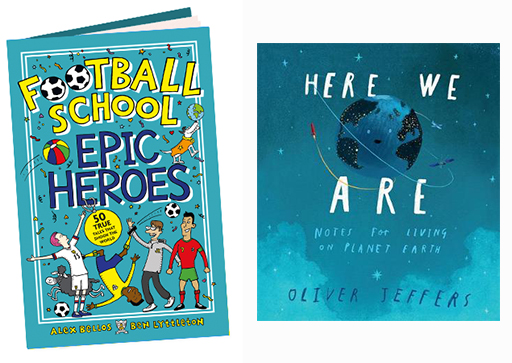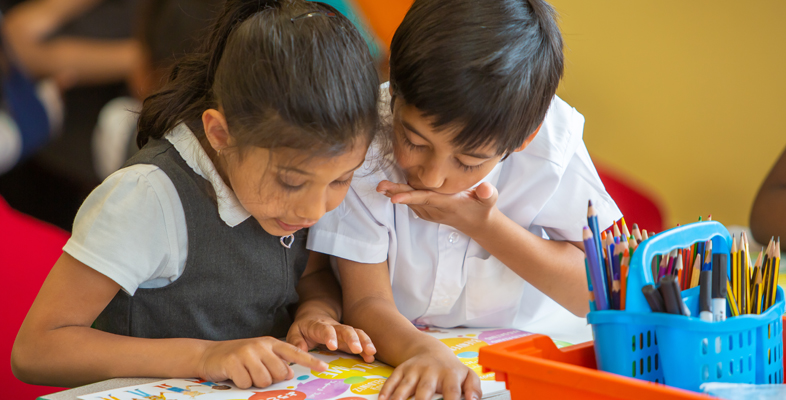5 Developing Reading for Pleasure pedagogies for all children
Research into disengaged male readers in four schools in England found that the way reading was taught in the classroom impacted on the boys’ (and girls’) motivation and engagement with reading (Hempel-Jorgensen et al., 2018). This suggests that the ways in which children experience reading in school has profound consequences for whether they become engaged readers.
Children are motivated to engage with reading for both intrinsic reasons, such as enjoyment or an interest in a particular topic, and extrinsic reasons, such as rewards, competition, or better grades. However, intrinsic factors are more important in fostering in children a love of reading (Orkin et al., 2018). You will read more about this in Session 2, but first have a go at Activity 2.
Activity _unit2.5.1 Activity 2 Thinking about motivation in practice
Below is a short vignette that describes the reading activity of 7-year-old Logan in an English primary school. Logan is one of the youngest children in the class and scores below the expected reading level in standardised tests.
As you read the vignette, begin to think about how the classroom practices enable or constrain Logan’s engagement with reading. When you have finished, you will be asked to explore the issues more deeply.
Case study _unit2.5.1
The end of each morning in Meerkats Class is free-choice reading time. Children can read independently or in pairs, however, noise must be kept to an acceptable level. Children are allowed to select a book and begin reading as soon as they have completed their daily writing task. Most children are expected to select a book from the classroom bookshelf. However, a few children, whose reading level is more advanced, are allowed to bring books from home, or may visit the more extensive library in a communal area in the school.
Logan sits at a table with his best friends, Zac and Toby. The trio are renowned for their passion for football and are devoted Chelsea fans. On this particular morning, Zac completes his writing in haste, and returns to the table proudly displaying his own personal copy of Football School: Epic Heroes (by Alex Bellos and Ben Lyttleton). Toby soon joins Zac, who quietly reads the book aloud, trying to muffle exclamations of delight. Logan hurries to complete his writing although is frequently distracted by the increasingly excited interaction across the table. He places his work in the tray and attempts to move his chair beside his friends. Mrs R returns the chair and directs Logan to the bookshelf to choose a book.

As one of last of the children to choose, the bookshelf is rather bare; Logan scans the shelf half-heartedly, glancing over to Zac and Toby. Mrs R comes to help him choose. He reaches for a David Walliams novel, but Mrs R says it might be a bit too difficult and hands Logan the picture book Here we Are (by Oliver Jeffers). Logan returns to the table holding up his book and calls to Zac and Toby, ‘Hey, look, it’s about space’. This is to no avail, they are engrossed in their discussion about Football School. He flicks through a few pages, glances across the table, before returning the book to the shelf and browsing the available books once more. After a minute or two, Mrs R asks the class to prepare for lunch.
Now make a note of your responses to the following questions.
- Do you think Logan is motivated to engage with books?
- What intrinsic factors drive Logan’s motivation to read?
- In what ways do the classroom practices nurture or hamper Logan’s reading motivation?
- What changes to classroom practices might help Logan become an engaged reader?
Comment
Logan seems very motivated to engage with the Football School book, which is understandable as the subject matter resonates with him. Yet the social interactions around books are possibly the greatest motivation for Logan to engage. You will read more about the social nature of reading in Session 2. Factors such as the rule on individual or paired reading, the requirement to finish the writing task and Mrs R’s perceptions of Logan’s reading needs, may together be constraining his desire to read.
Creating a classroom and school environment that fosters a love of reading for every child is not straightforward, it requires knowledge of texts and pedagogic knowledge, planning and commitment.
